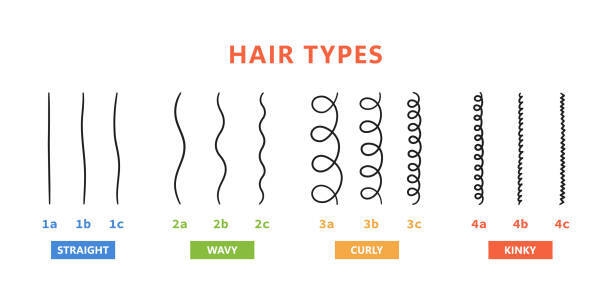
Have you ever wondered why your hair is straight, curly, or somewhere in between? Understanding your hair type is not just a matter of aesthetics; it's a science deeply rooted in genetics and influenced by various environmental and lifestyle factors. In this complete guide, we'll delve into the complexities of hair types, from their classifications—Types 1 through 4 and subcategories A, B, and C—to the role of genetics, and more.
Unraveling the Genetic Mysteries of Hair
The science of hair starts at the molecular level, focusing on genes inherited from both parents. These genes regulate various characteristics like protein structure, follicle shape, and strand density. Hair types are considered polygenic traits, meaning multiple genes play a part. Therefore, the children of parents with differing hair types may have hair that is an unpredictable mix of both.
Hair Type Classifications: Types 1-4 Explained
When we talk about hair types, we often refer to Andre Walker's Hair Typing System, which breaks it down into four primary categories:
1. Type 1: Straight Hair - Known for its silkiness and shine, but can also be coarse and thick.
2. Type 2: Wavy Hair - Displays an S-shaped pattern, ranging from a loose to more defined wave.
3. Type 3: Curly Hair - Forms definite loops and springs.
4. Type 4: Coily or Kinky Hair - Forms tight patterns, either in 'Z' or 'S' shapes.
Diving Deeper: Subcategories A, B, and C
These main categories are further defined by subcategories labeled A, B, and C:
- A - Looser patterns with a wider curl or wave diameter.
- B - Moderate diameter forming more defined curls or waves.
- C - Tighter diameter resulting in the most defined curls or waves.
Ethnic and Racial Influences
While it is not an absolute rule, certain ethnic and racial backgrounds tend to have predominant hair types. For example:
- African Descent: Primarily Type 4
- Asian Descent: Usually Type 1
- Caucasian Descent: Often Types 1 and 2, sometimes 3
Heredity: The Inheritance of Hair Type
Yes, hair type is inherited, thanks to the genes you receive from both parents. However, because hair type is a polygenic trait controlled by multiple genes, the outcome in children can vary widely, adding an unpredictable element to the mix.
Environmental and Lifestyle Influences
External factors like climate, diet, and hair care can influence your hair's texture and appearance:
- Climate: High humidity can cause frizz in curly hair.
- Diet: Nutrients like Omega-3s can improve hair health.
- : Overuse of heat tools or chemicals can damage hair.
Understanding your hair type is a fascinating journey into genetics, enriched by the influences of race, ethnicity, and environmental factors. Although primarily dictated by your genes, your unique hair type is a complex interplay of various elements, making it uniquely yours. Armed with this knowledge, you can tailor your hair care regimen to fit your specific needs and celebrate the natural beauty you were born with.

Leave Comment Below
0 Comment(s)